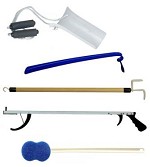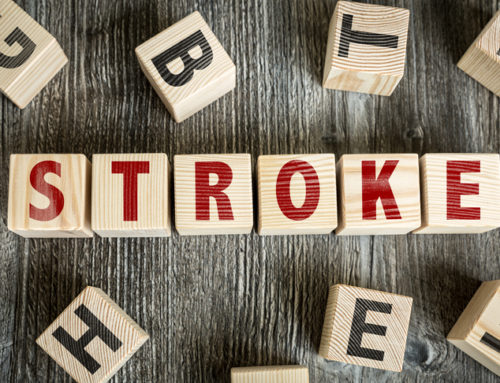After a stroke, it is very important for the stroke survivor to be able to regain her ability to handle the activities of daily living that we usually take for granted, such as:
- Eating
- Bathing
- Driving
- Dressing
Being able to do these things ourselves is really important for our self-esteem and our entire recovery process. After a stroke, some patients do deal with challenges in these areas, such as in dressing themselves. Being able to get dressed ourselves after a stroke gives us a jolt of confidence and comfort all day long. It gives us much more of a feeling of independence and self control. It also is very important for a stroke patient therapeutically to be able to get dressed without assistance.
Economy Hip Kits make getting dressed after a stroke much easier
By following a few key strategies, and with the use of some handy stroke aid products for dressing, you will very quickly be able to dress yourself with little trouble.
Possible Causes of Difficulty For Dressing Post Stroke
Getting dressed is a bilateral chore, involving both the left and right sides of the brain. After a stroke, areas of your brain could have suffered damage. This could make it more difficult for you to do some of the intricate movements necessary for getting dressed, such as buttoning a shirt, tying shoes and cinching a belt.
After your stroke, you also could have some of these issues:
- Perceptual deficits: You may have limited awareness and attention on the affected side of the body. You could have figure-ground discrimination issues, which means that you may have trouble seeing an object, because it blends into the background. Also, you could have difficult with right-left discrimination, or problems determining right from left.
- Apraxia: This is the lack of ability to plan out your movements, even though you have the range of motion, coordination and strength to do so. You could have an issue during dressing where it is hard to plan or to start the task.
- Perseveration: This is trouble with moving from one concept or idea to the next. This could make it harder for your to go from one task to another. For example, you may have trouble going from buttoning your shirt to tucking it in.
- Fatigue: You may just get tired when you are getting dressed. Things that you used to be able to do quickly without thought now take substantial energy and thinking. It is important for you to just take your time and to take a short break if you need it as you get dressed.
Tips for Dressing
You may want to have a caregiver assist you with getting dressed at first, until you find that you can do it yourself without any help. Key things to remember here include:
- Have all items that you need to get dressed with you at the start, including any dressing aid products (Economy Hip Kits).
- You should be positioned in a way that is according to your abilities at the time. You may want to be seated on the bed when you start to get dressed, as opposed to standing.
- Plan out the task before you begin.
- If you are having too much difficulty in dressing your affected side, ask your caregiver to help you with that. But use the affected side as much as you can, as this will help you to build strength in that side again.
Getting dressed yourself post-stroke is extremely important for your independence, and is very much something that you can do with practice, and with the appropriate stroke supplies.



